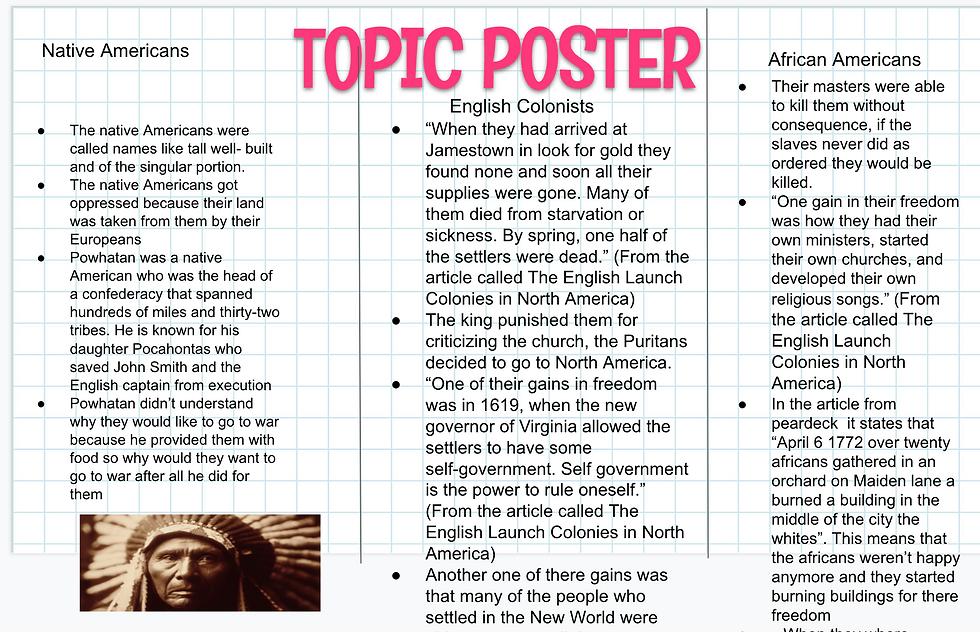"Teacher, Why Don't We Take Tests?" The Rationale for Choice Boards
- T4 Edtech
- Jun 26, 2021
- 3 min read
Updated: Jun 28, 2021

At the beginning of the past school year I made a decision not to give any type of test or quizzes for a grade. I had experimented with this approach during the 2019-2020 school year halfway through the year as I had become frustrated by the fact that my students would not study for these types of assessments. No matter how much effort I put for creating pre-test study guides or gamified quizzes, it seemed they didn't seem motivated to spend time necessary to prepare for the assessments. This required a paradigm shift on my part, not the students. I had begun exploring choice boards after Amanda Sandoval, a brilliant history teacher that I follow on Twitter shared some templates that I found appealing. Moreover, I was attracted to the idea that the students could choose how they wanted to represent their learning of the content.
Thus began my conversion to using choice boards exclusively for assessments. I had always tried to be a progressive teacher and I figured that I would give this a shot. I did explain to my administrators what I was doing in case the question ever arose. However, since my administrators had always trusted my teaching approach, there wasn't much of a discussion as I had also largely shelved our history textbook since it was 16 years old and did not serve much more than a supplement in viewing how history was written. In the Spring semester of the 2020 school year I made my foray into the world of choice boards.
The first choice board template was created by Amanda Sandoval and I made some modifications that would accommodate my 8th grade students. The topic selected was from our study of abolitionists. First, students were given explicit tasks to read an article from NEWSELA, watch a video, and then take a vocabulary quiz. Next, I selected the platform of how I wanted the students to represent their respective learning . I provided the students with the opportunity to create a Go Fund Me Page from a Google Slide template, a digital poster which was also on a Google Slide, an InstaStory which mirrors the Instagram Story platform and was created by Matt Miller, or record a Flipgrid video on the topic.

Each of the four options gave the students agency in their own learning process and it was diverse enough to give access to assessment of the content to all students. Furthermore, by utilizing the InstaStory and Go Fund Me options, students could readily identify with platform.
Fast forward to this past school year. My students began their study of US History with the New World Colonization. Although we were in a remote setting it did not take long for a student to ask when were we going to have a test. I had explained to them a few weeks previously that they were going to be assessed on their learning, but not tested. I repeated my reasons for giving assessments and not tests and one student said, "but the other history teacher gives tests." I asked them how much time would they study for a test and most said not at all. Within a week the students were given their first choice board. Below is an example of what was produced. For me, it was clear that using the correct technology in this case, the use of a digital poster on Google Slides, an Adobe Spark video, or an Eduprotcol Sketch and Tell assessment, was literally the right choice.

As one could see from the above student's example, learning took place. It was better represented than any multiple choice test or quiz and students were decided based on their ability and skills how to represent their understanding of the content.
Since the first months my use of choice boards evolved as the instruction in our district continued remotely for the entire year. Students were also given choices about what essential questions from the unit of study they wanted to pursue as well as how they could represent learning. Options were usually a video from either the Adobe Spark or Flipgrid platform, some type of drawing using the Eduprotocol, Sketch and Tell or free-hand which could be uploaded, a digital poster, or student choice. Empowering and engaging students is key as education moves forward, Post-Pandemic, and I feel that assessment of students through the use of choice boards meets these imperatives. After all, as teachers are we told we have to teach our content the same manner? "Teacher, when are we going to take a test?" I hope this question will soon evolve into, "Teacher can I use Minecraft to show you what I learned about the Civil War?"
*Note - Eduprotocols is a series of instructional strategies created by Marlena Hebern and Jon Corippo





Comments